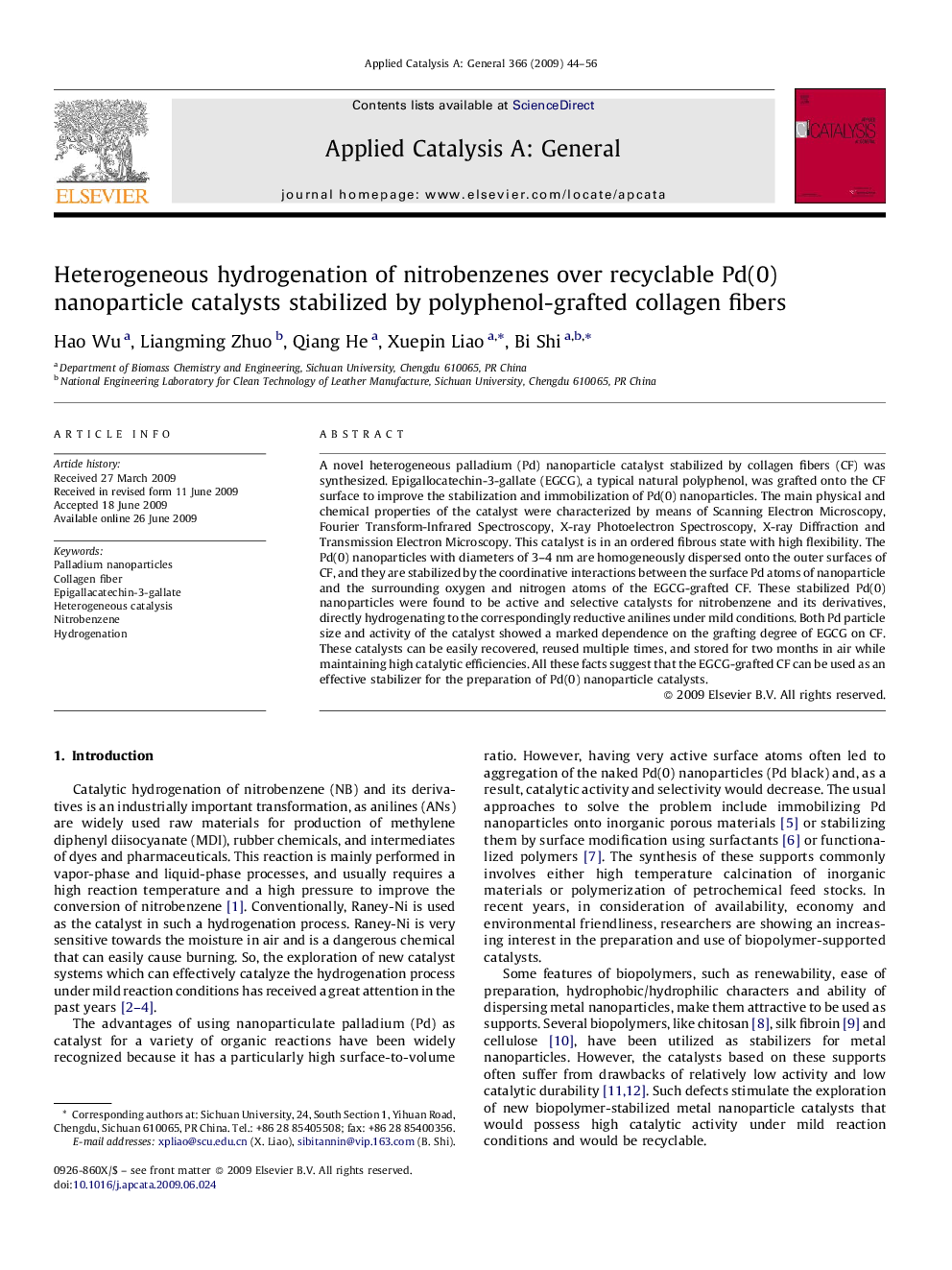| Article ID | Journal | Published Year | Pages | File Type |
|---|---|---|---|---|
| 42755 | Applied Catalysis A: General | 2009 | 13 Pages |
A novel heterogeneous palladium (Pd) nanoparticle catalyst stabilized by collagen fibers (CF) was synthesized. Epigallocatechin-3-gallate (EGCG), a typical natural polyphenol, was grafted onto the CF surface to improve the stabilization and immobilization of Pd(0) nanoparticles. The main physical and chemical properties of the catalyst were characterized by means of Scanning Electron Microscopy, Fourier Transform-Infrared Spectroscopy, X-ray Photoelectron Spectroscopy, X-ray Diffraction and Transmission Electron Microscopy. This catalyst is in an ordered fibrous state with high flexibility. The Pd(0) nanoparticles with diameters of 3–4 nm are homogeneously dispersed onto the outer surfaces of CF, and they are stabilized by the coordinative interactions between the surface Pd atoms of nanoparticle and the surrounding oxygen and nitrogen atoms of the EGCG-grafted CF. These stabilized Pd(0) nanoparticles were found to be active and selective catalysts for nitrobenzene and its derivatives, directly hydrogenating to the correspondingly reductive anilines under mild conditions. Both Pd particle size and activity of the catalyst showed a marked dependence on the grafting degree of EGCG on CF. These catalysts can be easily recovered, reused multiple times, and stored for two months in air while maintaining high catalytic efficiencies. All these facts suggest that the EGCG-grafted CF can be used as an effective stabilizer for the preparation of Pd(0) nanoparticle catalysts.
Graphical abstractA novel heterogeneous palladium (Pd) nanoparticle catalyst stabilized by collagen fibers (CF) was synthesized. Epigallocatechin-3-gallate (EGCG), a typical natural polyphenol, was grafted onto the CF surface to improve the stabilization and immobilization of Pd(0) nanoparticles. These well-dispersed Pd(0) nanoparticles were found to be active, selective and recyclable catalysts for the hydrogenation of nitrobenzenes under mild reaction conditions.Figure optionsDownload full-size imageDownload as PowerPoint slide
